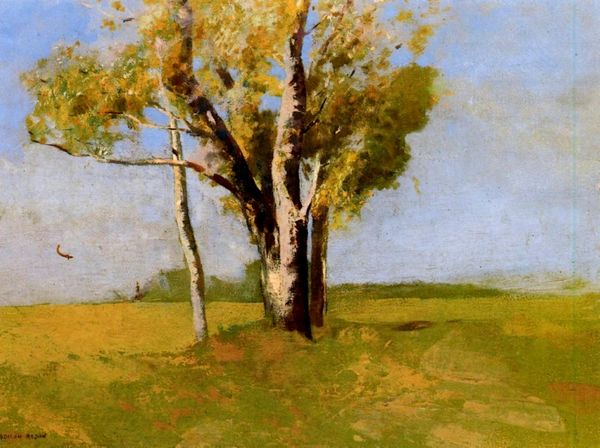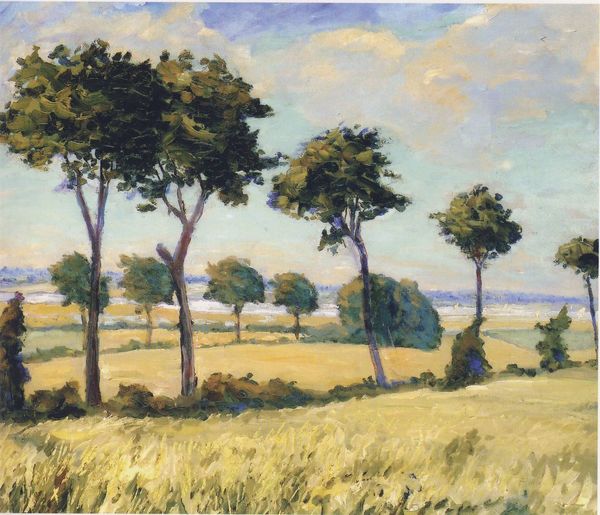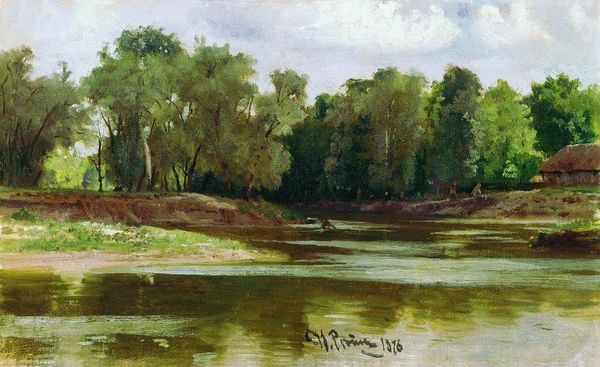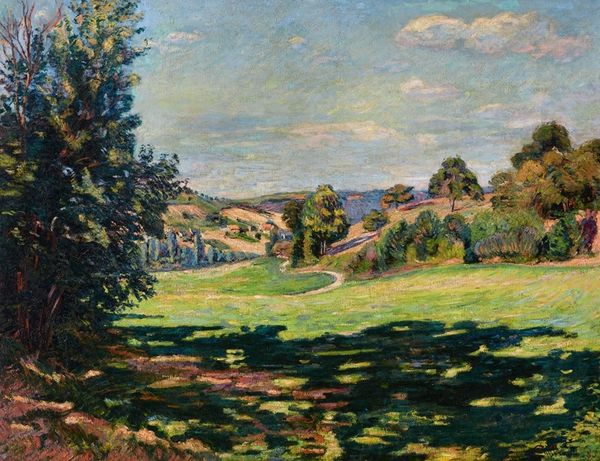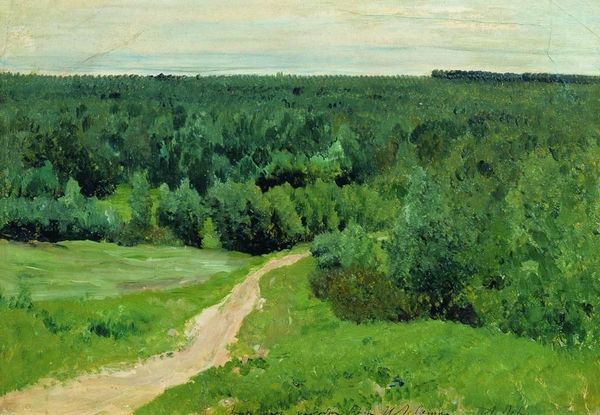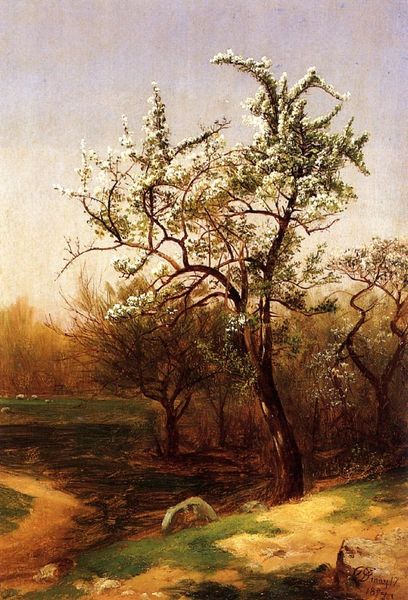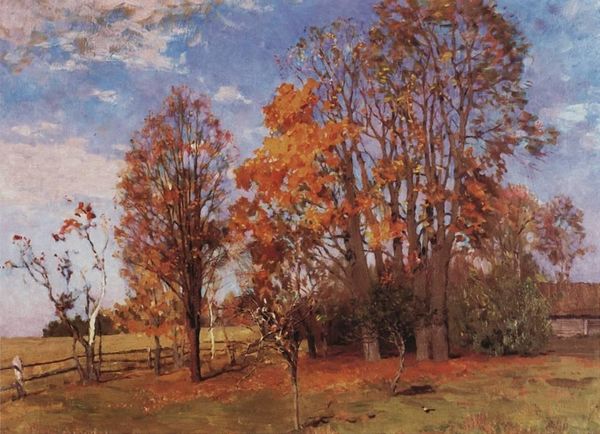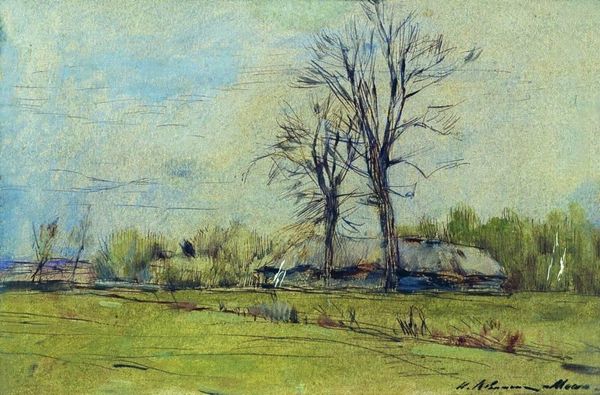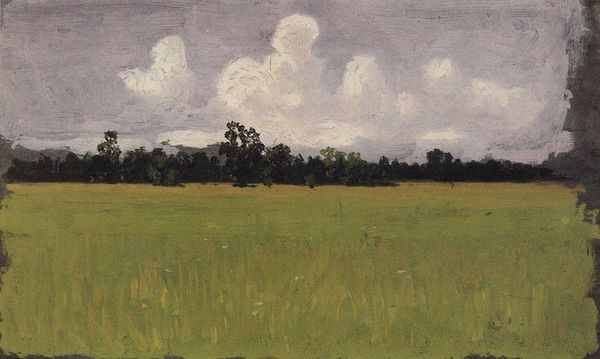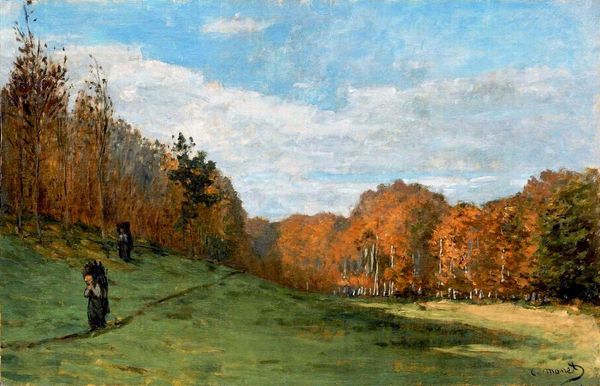
Copyright: Public domain
Editor: This is Frederic Bazille’s "Landscape on the Shore of Lez," painted in 1870 using oil. It feels like a really calm, classic landscape, but something about it feels...unfinished? How do you interpret this work? Curator: Bazille's landscapes provide fertile ground for understanding the shifting social landscapes of 19th-century France. He wasn't merely depicting nature; he was engaging with it in a manner that reflects both his privileged position and the broader societal anxieties about class, land, and leisure. How do you see the relationship between land ownership and privilege reflected here? Editor: Well, you have a point. There’s an undeniable sense of ease. It doesn't portray hard labor, just this serene, almost untouched space. It does make you wonder whose land this is and who profits from it. Curator: Exactly! This wasn’t created in a vacuum. Landscape paintings like this played a role in constructing and reinforcing bourgeois ideals of property ownership and appreciation of the "natural" world, often obscuring the labor and social inequalities embedded in that ownership. The "unfinished" quality you sensed might even hint at the artificiality of these idealized visions. Editor: I didn't think about that before. So, the painting becomes more than just a pretty scene; it becomes a statement about society. Curator: Precisely. By exploring these nuances, we start to unveil the complex relationship between art, power, and representation. Landscape painting offered more than pretty images of land; it can reflect existing power structures in French society. It prompts reflection about similar power dynamics mirrored across history to today. Editor: This makes me rethink landscape art altogether! Curator: And that's precisely the point: to look beyond the surface and see the deeper connections to social, political, and economic realities.
Comments
No comments
Be the first to comment and join the conversation on the ultimate creative platform.
